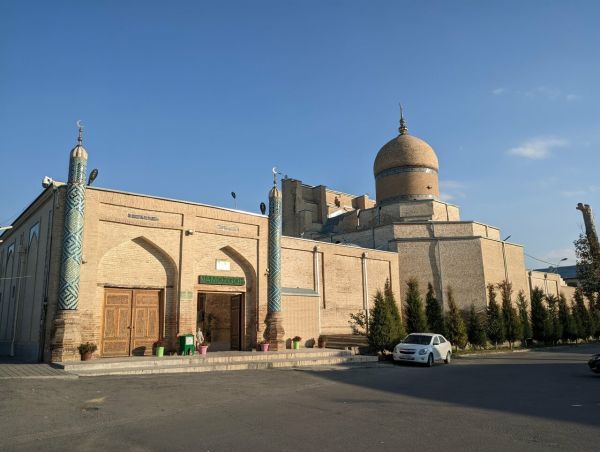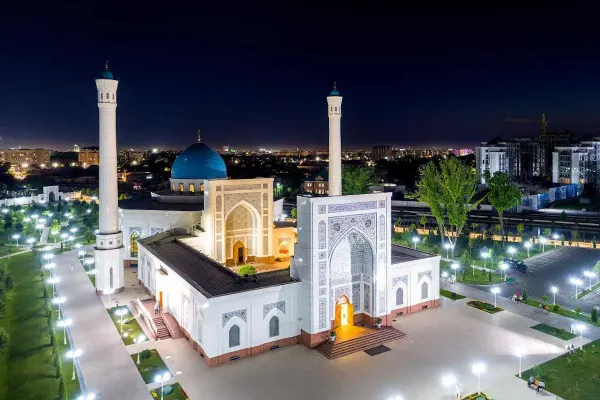Namazgoh Mosque in Samarkand
Samarkand, one of the most ancient cities in Asia, is located in the south—east of Uzbekistan in the picturesque valley of the Zarafshan River, surrounded by the Pamir-Altai Mountains. According to some sources, Samarkand was founded 4,700 years ago. The city was an important point on the Silk Road connecting Asia with the Mediterranean. In different historical periods, Samarkand was under the rule of the Greeks, Eastern Turks, Arabs, and Persians. Alexander the Great even conquered it.
Today Samarkand is a large city, the second largest in Uzbekistan. Modern Samarkand is incredibly picturesque and authentic, literally saturated with history, oriental flavor and the spirit of antiquity. In 2001, the city was included in the UNESCO World Heritage List.
The main attractions of Samarkand, of course, are mosques, madrassas and other religious buildings.
Namazgoh Mosque — also often found in literature spelling and pronunciation Namazgah or Namozgoh — is one of the most ancient mosques in Samarkand. It was built outside the city, at some distance from the bustling center of Samarkand.
The name of the mosque, Namazgoh— is based on the word "namaz", which means "prayer" in Persian. The very word "namazgoh", which originally meant "a place for prayer", gradually acquired an additional meaning: it was the mosques located outside the city that began to be called that way. However, today the location of the Namazgoh mosque no longer seems so remote: it is quite possible to reach it on foot from the city center.
The Namazgoh mosque in Samarkand should not be confused with the mosques of the same name in other Uzbek cities — Bukhara and Tashkent.
The Namazgoh suburban mosque was built in the 17th century from brick, in the typical architectural Islamic style of that period. Unfortunately, the names of the architects and craftsmen who built the structure have not survived to this day, as well as its history. But the name of the patron is known, thanks to whose financial support it was erected.
Nadir Muhammad Divanbegi (1568-1644) was a representative of the noble Uzbek Arlat family, a politician who held the position of divanbegi — "Minister of Finance" and was the personal vizier of Khan Imamkuli Khan. In 1632-1633 . Nadir Divanbegi was the hakim ("chief judge") of the Samarkand region. With the participation of Nadir Divanbegi, various spiritual buildings were built in Samarkand and Bukhara. Thus, the construction of the famous Nadir Divan Begi Ensemble in Bukhara dates back to the period 1622-1623.
Initially, the Sunni Namazgoh mosque served as a "country mosque" — it had a pond (house), it was surrounded by shady gardens. The mosque was built and operated as a "Juma Mosque", that is, a "Friday Mosque" - a cathedral mosque for collective prayer performed by all Muslims of the community at noon on Friday (Juma prayer).
Today, the Namazgoh Mosque, which is located in the south of the city of Samarkand, at some distance from traditional tourist trails, is certainly not the main mosque of the city and will not impress you with its striking appearance or rich history. But the lack of brilliance and pathos of this Samarkand landmark opens up something more to tourists.: The modest facade hides the ascetic spirit of authentic antiquity.
Visiting the mosque is free of charge. Donations are welcome. When visiting a mosque, the rules should be strictly observed.: to visit the mosque only in closed clothes, it is obligatory to take off shoes at the entrance, men and women pray separately.























